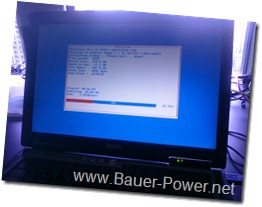I periodically will write about cool free disk imaging tools I find. There are many free ones out there, but only a few are worth mentioning in my opinion. For deploying images to multiple computers at once, I have written about Fog which uses Partimage as it’s disk cloning tool.
Another free tool I have written about that is also based on Partimage is P.I.N.G. or Partimage Is Not Ghost. That one is good because you can quickly boot off of a live CD and create an image to USB, or even create a pxe environment to use in a server like situation. If you have the right tools you can even make self-bootable ghost DVD’s which can come in handy. The only problem I have with P.I.N.G. is it’s requirement to use answer files in order to get the job done.
Well today I had to take some disk images of two HP Proliant servers, and I wanted to try something new. I have heard of this tool before, but never got around to using it until today. It is called Clonezilla! Instead of using Partimage, it instead is based on Partclone. Not that it really makes a difference.
Clonezilla comes in two flavors. A live version for quick imaging to USB drives, or a server edition for multicast cloning. Here are a list of features from their website:
 Free (GPL) Software.
Free (GPL) Software. - Filesystem supported: (1) ext2, ext3, ext4, reiserfs, reiser4, xfs, jfs of GNU/Linux, (2) FAT, NTFS of MS Windows, (3) HFS+ of Mac OS, (4) UFS of FreeBSD, NetBSD, and OpenBSD, and (5) VMFS of VMWare ESX. Therefore you can clone GNU/Linux, MS windows, Intel-based Mac OS, and FreeBSD, NetBSD, and OpenBSD, no matter it's 32-bit (x86) or 64-bit (x86-64) OS. For these file systems, only used blocks in partition are saved and restored. For unsupported file system, sector-to-sector copy is done by dd in Clonezilla.
- LVM2 (LVM version 1 is not) under GNU/Linux is supported.
- Grub (version 1 and version 2) is supported.
- Multicast is supported in Clonezilla SE, which is suitable for massively clone. You can also remotely use it to save or restore a bunch of computers if PXE and Wake-on-LAN are supported in your clients.
- Based on Partclone (default), Partimage (optional), ntfsclone (optional), or dd to image or clone a partition. However, Clonezilla, containing some other programs, can save and restore not only partitions, but also a whole disk.
- By using another free software drbl-winroll, which is also developed by us, the hostname, group, and SID of cloned MS windows machine can be automatically changed.
I liked Clonezilla because it was fast, and it didn’t require the different files like P.I.N.G. did. I just booted up, selected my USB drive as the destination and followed the prompts. It couldn’t be easier!
What’s your favorite Linux based cloning solution? Let us know in the comments!


 1:00 AM
1:00 AM
 El DiPablo
El DiPablo




